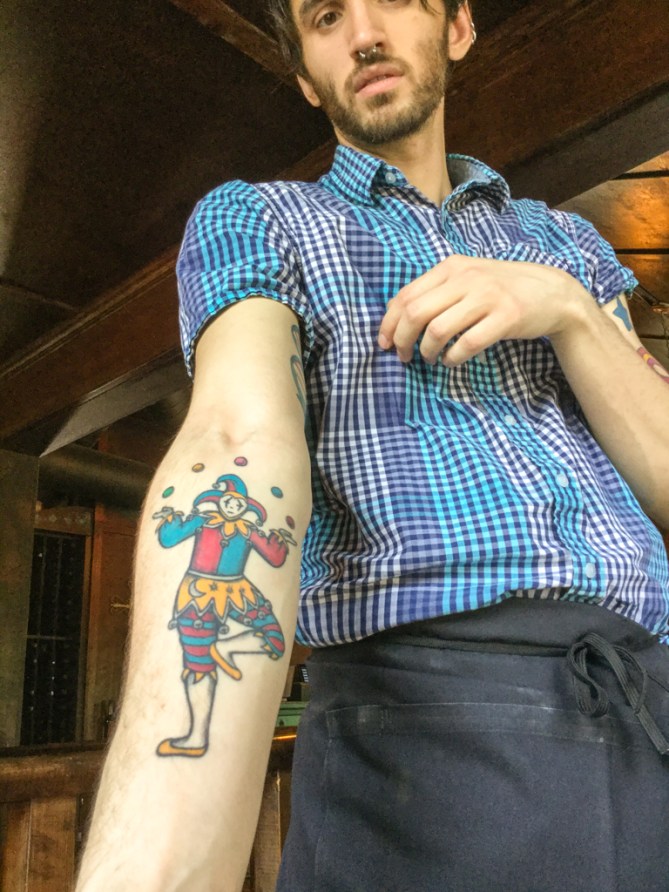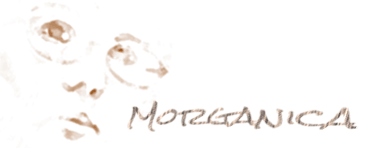Rollicking last couple of months. If I were into astrology, I’d probably be talking about cusps and whether Aries was rising or something, which always sounds faintly pornographic.
My potentially dirty mind and the vagaries of the universe aside though, yep, it’s been a rollicking couple of months.
Most of the rollicks (is that really a word?) have centered around the air pollution controversies currently facing the art glass industry. I’ve gotten a number of private inquiries as to why I wasn’t blogging away about this. Mainly, it’s because I seem to be spending half my sleep time writing about it on Facebook. Doesn’t leave much time for writing on this blog.
If you’re really interested in what’s been going on in the Portland glass community, I’ve got a (lengthy) explanation hiding under the plus sign below. It should be its own blogpost, but there’s no point in making you click to go elsewhere. So, like a flash of a bright cadmium-yellow petticoat, simply peek under to learn what I’m talking about.
Me, I seem to be inundated with the colors in question. Right now the kilnformed glass world is more than a wee bit low on what some are calling the “toxic glass colors,” yellow and red and orange and green, and then a few ancillaries like blacks and teals and a few browns and purples. That’s because the fusible art glass factories stopped producing them in February.
Well, one company, Spectrum up in Washington, is still producing some of these colors. But since many of its chromium and cadmium colors
arewere produced by its partner Uroboros in Portland, it’s not much better off.
When the story of toxic emissions broke, my first thought was to review the actual facts I could find. My second was to roundly condemn the reporter for writing a really stupidly sensationalized story that was short on facts, long on hype (after all, this was a guy in my former line of work, doing a very bad job).
My third thought was to consider the online perception (because that’s my current line of work) and its rather chilling implications. A community had just been told its children were poisoned by the local art glass industry. I had a feeling no one would chuckle and take it as a joke.
…which led me to my fourth thought, and the Bullseye Resource Center, where I bought as much yellow and red and orange and green and teal and brown and purple and black glass as I could afford.
Romantic Cynthia did it as a gesture of solidarity, in support of a company that has done so much to build the artform I love.
Practical Cynthia figured she’d better lay in a supply of any glass made with cadmium or chromium, because something told her they’d be getting very hard to find. Two weeks later? Good luck locating even a small jar of red-orange frit.
I’m finding myself performing mental gymnastics over the morality of hoarding something that’s become a point of controversy and, frankly, pain, for many people.
I’m an artist, or what passes for one on weekends, so color is simply…life. The thought that it might also be a moral issue is a new and not particularly pleasant thought.
As happens, my job has revved into high gear with a crucial project of many parts, huge implications, and lots of angry, unhappy, and confused people. My boss’ boss says this is my “zone,” and I love to play in it; it’s the intersection of emotion and data where things become very real. You patiently work through the issues, learn how to advocate for the users and the developers, and find the right data sources to build an entire new world.
It’s like working Schrodinger’s jigsaw puzzle, one that says “ouch,” or maybe bites you, when the pieces don’t fit. Ain’t nothin’ like it in the world.
But it’s also more than a little intense, and with the air pollution thing it seems like I’m doing it everywhere. So today I just want to relax. I’m gonna get a haircut, have a quiet lunch somewhere nice while I write this post, and then maybe go home and play in the studio for a bit. I’ve got a couple of projects I’ve been dying to write tutorials for, and some pate de verre mold tests to run.
Hmmm. I maybe need to not use that word “dying.” Not in this post, anyway. Too close to the bone.
Markie peers at what was supposed to be my coppery red hair. Or at least that’s what it was when I left her chair six weeks ago. “What’s this green?” she asks suspiciously, lifting my bangs.
 Some people wear their hearts on their sleeves. I apparently wear mine on my head, and it has a mind of its own.
Some people wear their hearts on their sleeves. I apparently wear mine on my head, and it has a mind of its own.
My hair is like a little alien person who happens to live in the follicles on top of my head. Lately I’ve taken to calling her The Coif.
The Coif has turned bright chromium green, apparently expressing sympathy with the air quality situation.
“I dunno, Markie,” I say, “She was red for about two days and the next morning…green.”
Markie growls; she’s been battling The Coif for a few years now, and it’s always a tossup who’ll come out ahead.
Two hours later The Coif is deep mahogany and Markie is satisfied. “That should hold her for awhile.”
 We’ll see. The restaurant next door is called Verde Cocina, an organic Latin place, and so The Coif and I settle in there for lunch.
We’ll see. The restaurant next door is called Verde Cocina, an organic Latin place, and so The Coif and I settle in there for lunch.
“What’s your favorite today?” I ask the waiter, trying to ignore the fact that I just chose to eat lunch in a place called the Green Kitchen.
Green.
He ponders this a minute, then recommends one of the specials, the chicken enchiladas. “The sauce is incredible,” he promises, and grins as he stretches.
I notice his tattoos, which are some of the brightest I’ve ever seen. There’s a court jester, juggling, and stars and balls: A circus act.
“Nice tatts,” I say, “The colors are so vivid!” He smiles.
 “It’s because my skin is so pale, I think, but they are bright.” I ask if I can take pictures, and he obligingly peels back his sleeves while I snap away with my iPhone.
“It’s because my skin is so pale, I think, but they are bright.” I ask if I can take pictures, and he obligingly peels back his sleeves while I snap away with my iPhone.
Then enthusiasm overtakes him and he starts removing his shirt, pointing to the aqua elephant on his shoulder.
It’s holding a cadmium red wrench. I look puzzled, so he explains. “That’s in honor of elephants being some of the first animals to be known to use tools.”
“See, scientists thought that the test for human intelligence was that we could use tools. Turns out that a lot of animals make and use tools, so they’re not so very different from us and we need another measure to see what makes us human. Or maybe it’s just a reminder that we’re not so far from the animals. I like the duality of that.”
 “Why is the wrench red and the elephant blue?”
“Why is the wrench red and the elephant blue?”
He shrugs. “I just like the color–red seemed appropriate. All of these have related colors, like this one, and it’s got the most meaning for me.”
He pulls up his other sleeve to reveal a rainbow helix.
And there are my glass colors again: Chromium greens and cadmium red, orange, and yellow, fully, poisonously arrayed inside the pattern of life. “Rainbow DNA,” I say faintly.
“Sort of,” he corrects, “It’s DNA, but it’s also a duality because I’m using the sign for infinity. We have this DNA that is the essence of all animals, and all humanity.”
He leaned forward, stroking the blue-green curve of the sugar phosphate backbone, pressing his point.
“We are unique. Our DNA is unique, and if our species ends, we’re gone like all the other species that have disappeared. Like the species that we have ended.”
Sobering thought, that.
“But the DNA that’s inside of us is infinite,” he insists, “It passes on as our legacy to the next species. Because of DNA we are infinite and finite at the same time.”
He bustles off to bring my enchiladas. The promised tasty sauce is, naturally, a bright chromium green, just like the glass I can’t, at the moment, buy. It is also delicious.
I think about color, and all these tool-using humans with their ingenuities and poisons and infinite-but-finite DNA. What we’re doing to our environment, in the name of money and business.
What we’re doing to ourselves with our lawyers and politicians. Why art suddenly seems to take a back seat.
And how complicated it all becomes when you don’t have a waiter with rainbow tattoos.
Then I finish my lunch, and get on with my day.


Being 100% compatible these days… I learned to fuse using BE (and something else…something else?) Way back in the fog when BE first made its jump to Yourpe I was messing with WIESENTHALGLAS. Really excellent stuff to blow, colorless cristal etc. I had invested in a half ton of clear rods. 2 ” x 10″. And a couple of hundred colorbars. Little did I know that THAT much color bar was enough to last 3 generations. I waded thru the clear pretty quickly, using colors that you would envy. COE 104.
Germany (home to the big “W”) discovered how dirty it all was, and banned all glass makers who were not outside of the borders. It was seen as ok to continue producing this dirty stuff, as long as it was in Poland, or the then Checkoslovakia, or maybe even Bulgaria. But not at home ok fellows?
Nice gesture. But the guys at the factory who knew how to make it all work, as compatible with itself, retired. They didn’t want to move. The foreigners just didn’t have it together enough to remain consistant. The colorbars became non compats. Oh me, what shall I do?
Parallels? Look down the road. We been there and done that…
ps if ya need color bars, lemme know.